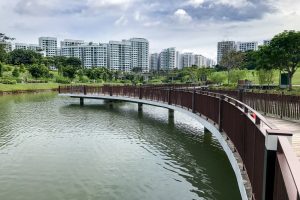Housing prices around the world have been on a tear during the COVID-19 pandemic. You might not think that a global pandemic would light a fire under housing markets, but low interest rates intended to stimulate economic activity have created attractive mortgage deals. Households on lockdown were also forced to save money that otherwise might have been spent on retail or travel, and a large amount of that seems to have been shifted toward housing.
At the same time, the supply of new houses has been constrained with construction crews unable to go to job sites while global supply crunches drove up the cost of materials like lumber. Soaring demand in the face of constrained supply, with cheap financing tossed in the mix, is a perfect combination for runaway housing prices.
Here’s the thing. The price that a house sells for on the open market, especially on the resale market, contributes little to GDP. When measuring the output of a country, we look at the goods and services that are produced in a given year. In housing, that means construction is counted as output but the resale of existing housing stock is not, or only contributes very little through broker commissions and so forth. Housing bubbles, in other words, are not a good thing for the economy.
Houses are tradable assets, and when the value of assets becomes detached from reality due to one-off conditions – like constrained supply, cheap financing, and excess demand – it means money that could be going to more productive uses ends up being sucked into a real estate bubble, and some of that value will simply disappear when the bubble pops. With interest rates on the rise around the world, an end to mobility restrictions and less forced savings, there should be an abatement in upward pressure on house prices but there are still concerns about people being priced out of the market.
In Singapore housing takes on an even more strategic dimension, because despite reclamation efforts there are very strong and basically unavoidable constraints on the amount of land available for people to live on. Therefore, housing in Singapore must be very carefully managed. It cannot be shaped solely by the interaction of buyers and sellers in a free market, because the available supply of land needs to be optimized in a way that keeps housing affordable.
Singapore has approached this by creating a two-tiered market structure. The Urban Redevelopment Authority is in charge of creating master urban and zoning plans, and also approving private residential development projects. Such projects tend to be high-end apartments and condominiums that are built by developers in response to market conditions and sold at high prices.
To provide a second tier of housing supply which is shielded from market conditions, a separate statutory authority was created in 1960 called the Housing & Development Board (HDB). If you venture beyond Singapore’s downtown and riverfront areas, efficient and dense blocks of HDB flats are ubiquitous throughout the island. According to the 2019 Annual Report, about 80 percent of Singaporeans live in an HDB flat, of which over 1.2 million have been built since 1960.
HDB flats, which are sold on 99-year leases, are meant to be at least somewhat insulated from market forces. The purpose of the HDB is to ensure a sufficient supply of housing exists at affordable prices given limited availability of land. Unlike a private developer, profit is not the primary motivation. In the 2019/2020 fiscal year, the housing board booked an operating loss of about SG $2.7 billion. These deficits are generally covered by government grants, the cumulative total of which has reached SG $36.2 billion since 1960.
Despite this two-tiered structure, and the role of the HDB as a check against the irrational exuberance of the market, prices have been on a sharp upswing. The Resale Price Index for HDB flats increased 12.7 percent in 2021 while the URA reported similar surges in private residential prices. With lockdowns ending we should see a big increase in construction, and the government has introduced measures such as tighter lending requirements and higher stamp duties meant to cool the market. But that even Singapore’s housing sector, despite being carefully structured and managed in a way that reduces exposure to such pressures, has been sucked into the same real estate bubble bouncing markets around the world just tells you how far COVID-19 knocked everything off balance.

































